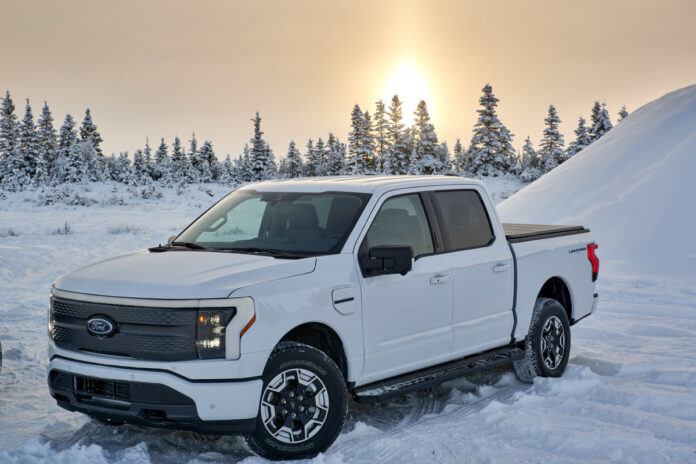Large electric vehicles like pickup trucks and SUVs aren’t exactly flying off showroom floors. When the CEO of one of the big three says vehicles like his halo electric truck have some “unresolvable” problems, that’s what we call raw honesty. According to InsideEVs, Ford CEO Jim Farley made an ominous statement on the company’s fourth-quarter earnings call.
“For larger retail, electric utilities, the economics are unresolvable,” Farley stated. “These customers have very demanding use cases for an electric vehicle. They tow, they go off-road, they take long road trips. These vehicles have worse aerodynamics, and they’re very heavy, which means very large and expensive batteries.” He went on to say that the blue oval would focus on small to medium-sized electric vehicles that present a stronger economic case.
Related: Lucid wants to sell a lot more than just cars
Larger EVs: price eclipses efficiency
Large electric pickup trucks and EVs are a pricey bunch. The base F-150 Lightning XLT starts at $62,995 and climbs to $83,995 for the top Platinum trim. A 2025 GMC Sierra EV starts at $89,995, and the Hummer EV’s base MSRP is $96,550. All of these vehicles use big batteries, which are expensive to manufacture and weigh anywhere from 6,000 to over 9,000 pounds, making them rather inefficient for electric vehicles.
Conventional wisdom says an EV will always be more efficient than a gas-powered car of the same size, but they pale in comparison to smaller EVs. Measuring the efficiency of an EV is based on what’s known as miles per kilowatt-hour of electricity. Near 4 miles per kWh is pretty good, and EVs like the Tesla Model Y achieve that. Move up to something like a giant Hummer EV, and it drops to a mere 1.5 miles per kilowatt-hour of electricity. The bigger and heavier EVs require bigger batteries to achieve similar ranges as their smaller counterparts.
Related: Model 3 vs. Model Y: Which Tesla should you buy?
Ford has made strategic changes in response
Ford’s once-robust plan to bump its annual EV production to over two million vehicles by the year 2026 has been adjusted in response to changes in the EV market that have seen the rise slow down. One of the vehicles planned was an Expedition-like three-row SUV, but that plan has now been shelved in response to the market.
Story continues
View the 13 images of this gallery on the original article
Ford now wants to build a midsize all-electric truck that would slot in below its F-150 Lightning. It would be based on the brand’s “Skunkworks” platform, which is also used for an expansive line of efficient vehicles, including hybrids and extended-range electric vehicles (EREVs). EREVs use an electric powertrain like an EV, but they are supplemented by an onboard gas-powered generator that recharges the battery during normal driving, bumping the range.
Related: 2025 Lexus UX300h review: A compact SUV that punches above its weight
The move to power larger vehicles with plug-in hybrid, extended-range electric, and gas-electric hybrid powertrains seems to make more sense. According to Farley, “Retail customers have shown that they will not pay any premium for these large EVs, making them a really tough business case.”
Ford will continue to pursue electric power for its larger commercial vehicles, such as work trucks and vans, which can utilize depot charging stations.
Final thoughts
As other automakers backpedal their once aggressive EV plans, they must simultaneously reassess what types of EVs they will pursue. Many automobile manufacturers had once planned to go electric across all segments, but now the formula seems to be broken for larger, more expensive EVs that don’t seem to draw large numbers of customers.
The change makes sense, but will Ford’s solution to help offset some of those misfires actually pay off? Only time will tell.
Love reading Autoblog? Sign up for our weekly newsletter to get exclusive articles, insider insights, and the latest updates delivered right to your inbox. Click here to sign up now!
Related: Automakers want to be tech companies now


